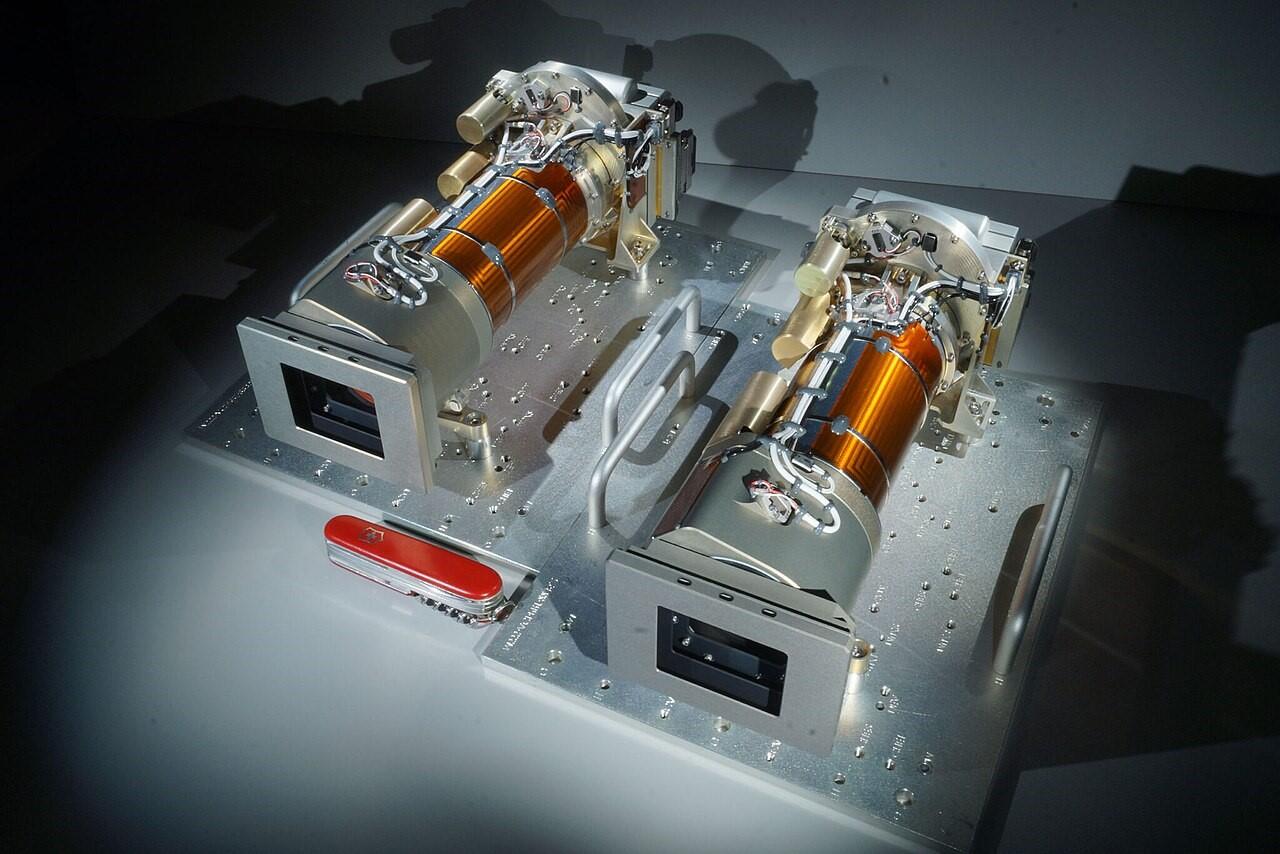Astrogeology has eyes on Mars through Mastcam-Z on Perseverance Rover
Astrogeology has eyes on Mars through Mastcam-Z on Perseverance Rover. The Mars 2020 Perseverance Rover arrived on Mars' surface in February 2021 carrying several instruments to conduct science experiments and look for evidence of past life. One such instrument is Mastcam-Z, a stereo high-resolution color zoom camera that gives us the ability to create 3D images.
USGS Astrogeology’s Ken Herkenhoff is Co-Investigator on the Mastcam-Z science team and talks about calibration, living on Mars Time, and the future of Mastcam-Z.
The Mastcam-Z instrument’s investigation has three primary goals:
- Collect information to help understand the overall landscape forms, processes, and geology within the rover’s view;
- Provide support for rover navigation and sample selection, and context for the other Perseverance instruments and rover tools by taking high-resolution images; and
- Collect information about the Martian atmosphere and sky during both night and day.
Mastcam-Z uses a pair of cameras on the rover’s mast to simulate a pair of human-like eyes (with the addition of a zoom capability). Because Mastcam-Z has two cameras, it can collect images in stereo. These slightly offset image pairs can then be used to create high resolution 3D images and models. Mastcam-Z collects images in red-green-blue color similar to what a human would see and also can use narrow-band filters to isolate specific wavelengths of light, including some in the near- infrared range, beyond what our eyes can see. Imaging in these additional wavelengths can help scientists determine what minerals are present, which helps them interpret the geological history of the area. According to the Mastcam-Z website, “at maximum zoom, the cameras see features as small as the tip of a pencil close by, and the size of an almond from a football field away.”
One of the first things the Mastcam-Z team did after landing was to take pictures of the calibration target. Calibration targets have standard color references and a shadow post that help the instrument team color-correct photos of the Martian surface to a high accuracy. They take pictures of this target in different lighting conditions, zoom levels, and with different instrument parameters to calibrate Mastcam-Z for use on the Martian surface. To learn more about calibration, check out this blog post written by Ken Herkenhoff and others on the Mastcam-Z team on the Mastcam-Z blog: Caltarget Fiesta!
A day on Mars is a little longer than a day on Earth: A Mars day, or sol, is 24 hours and 39 minutes long. To account for the difference between the typical work day on Earth and typical Mars sol, scientists and engineers involved with a newly-arrived spacecraft work on what’s called “Mars Time.” This means that they work in-sync with the Mars sol instead of the Earth day. This presents an interesting challenge since as those working on Mars Time will be starting their shifts 40 minutes later every Earth day, and that means that the difference between noon on an Earth day and noon on a Mars sol gets bigger and bigger. USGS Astrogeology scientist Ken Herkenhoff and former USGS Astrogeology contractor Alicia Vaughan talk about their experiences on Mars Time while operating the Mars Rovers in this blog post, including the unique challenges presented by the pandemic: Living on Mars Time with Mastcam-Z. Want to learn more about Mars Time? Check out this blog post by Alicia Vaughan, also writing about working on Mars Time for Mastcam-Z on the Perseverance Rover: Working on Mars Time (usgs.gov).
We at Astrogeology are loving the amazing photos and science coming from Mastcam-Z and hope you are following along with us! Check out the Mastcam-Z blog at Mastcam-Z (asu.edu) for updates and the raw rover images at https://mars.nasa.gov/mars2020/multimedia/raw-images/!
Get Our News
These items are in the RSS feed format (Really Simple Syndication) based on categories such as topics, locations, and more. You can install and RSS reader browser extension, software, or use a third-party service to receive immediate news updates depending on the feed that you have added. If you click the feed links below, they may look strange because they are simply XML code. An RSS reader can easily read this code and push out a notification to you when something new is posted to our site.




